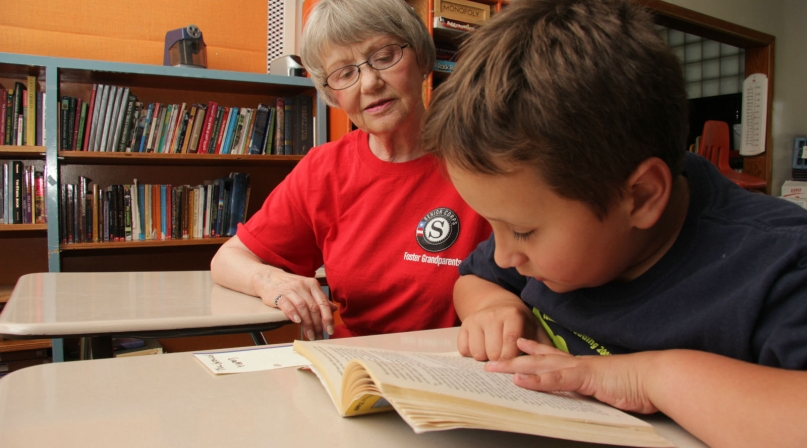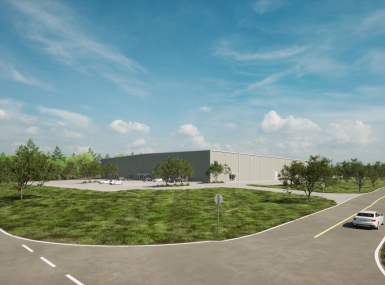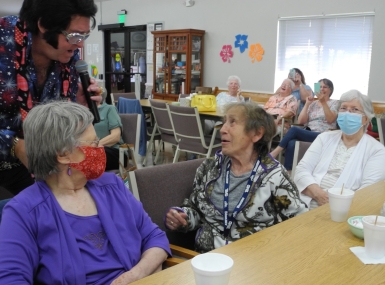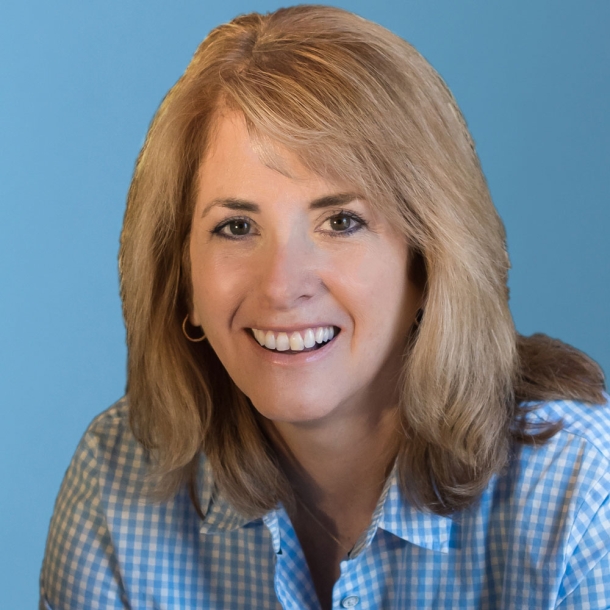Foster Grandparents Program matches senior volunteers with at-risk children

Foster Grandparents Program pairs 55-and-up volunteers with at-risk youths to serve as role models, tutors, mentors
In Alachua County, Fla., Kalamazoo County, Mich., and Sauk County, Wis., and dozens of other counties across the country, “family” for a foster care child may include a senior citizen who volunteers for the Foster Grandparents Program. Directors of the program say it’s a “win-win-win” for volunteers, children and communities, and they are getting the word out about it during May’s National Foster Care Month.
Part of Senior Corps, and its umbrella organization, the Corporation for National and Community Service, the program involves 25,000 volunteers, age 55 and older, who serve as role models, tutors and mentors to foster children and other at-risk children in the Foster Grandparents Program. They meet at schools, Head Start centers and other youth facilities, where volunteers help with reading, tutoring and just being a friend.
“Volunteers really enjoy helping out in the community, and some say it’s a reason to get up in the morning,” said Cindy Gehr-Deckert, who runs the program for the Southwestern Wisconsin Community Action Program in eight counties: Crawford, Grant, Green, Iowa, Lafayette, Richland, Sauk and Vernon. The program has seen success in several of those counties going back 40 years.
“When students do better in school, the community benefits,” Gehr-Deckert said. “Many educators find having an intergenerational volunteer enhances the classroom environment and offers increased opportunities for one-on-one.”
Karen Betley, who manages the program in Kalamazoo County, Mich., agrees. “If you can turn around one child, that is a huge difference to the community — and to the child,” she said.
One of the most challenging aspects
One of the misconceptions of the program, Gehr-Deckert said, is that people think the volunteers are older foster parents who open their homes to children.
“One of the most challenging aspects of working with the Foster Grandparents Program is the confusion with foster care,” said Gehr-Deckert. “The word ‘foster’ means ‘to promote the growth or development of.’ Foster care most frequently means that for a period of time, a child lives and is cared for by adults who are not their biological parents.
“On the other hand, Foster Grandparents do not care for children in their homes,” she said. “Foster Grandparents volunteer at approved sites.”
Another challenge is funding and management; while the programs receive federal funds they are usually coupled with local funding from the state, the county or other organizations. Across the country, local programs are run in a variety of ways, with help from various county departments on aging or volunteers, state offices or sometimes involvement by groups such as United Way, Catholic Charities or Goodwill Community Services.
Alachua program started in the ‘70s
In Alachua County, Fla., the program has been sponsored by the Board of County Commissioners since 1973, with a total annual budget today of $507,183, which is funded by the federal Corporation for National and Community Service ($374,620) and the county ($108,563), said Samantha Fleming, program coordinator. Local partners also kick in in-kind contributions of $24,000. About half the budget is used to pay volunteers’ stipends and other benefits such as travel reimbursement and recognition programs.
In Alachua County, the program mainly focuses on children ages 2–6 years old. There is almost always a waiting list, Fleming said. Typically, teachers identify at least two children per classroom who could benefit from one-on-one help.
Younger volunteers
Betley said that since she’s been managing the program in Kalamazoo County, she’s seen younger and younger volunteers, due to the economy. “It used to be mostly people age 65 to 80 volunteering,” she said. “Now with our economic climate, we see 55-year-olds who still need a job.”
The stipend and transportation reimbursement are tax-free and most receive a meal from the school where they volunteer.
“It’s about $212 a week,” she said. With the extra money, they can “buy healthier food or cover their prescriptions.” Her average volunteer has an annual income of $9,000 and lives in subsidized housing.
Fleming said the most challenging part of the program is “finding volunteers that are a good fit.”
Vetting is very strict for those who wish to volunteer in the program, Gehr-Deckert said. Every volunteer has three background checks: National Sex Offender Public Registry, Department of Justice and FBI fingerprinting.
How to find great volunteers
“Our most successful recruitment efforts come by word of mouth from our current volunteers who serve as program ambassadors,” Fleming said.
The county also participates in community outreach events and gets plenty of local media coverage. Currently, the program has a complement of 80–90 volunteers.
The program is popular, with most volunteers sticking with it for five years, she said. One volunteer has been in the program for 26 years and some volunteers are in their 90s. Alachua County provides a mandatory 40-hour pre-service training program. “Ultimately, volunteers must be patient and compassionate with a true desire to see children succeed,” said Fleming.
In Kalamazoo County, Betley said she has a volunteer who is almost 90 years old and volunteers 40 hours a week. When the program starts to run low on volunteers, they visit areas where low-income seniors might gather including commodity distribution centers, where they bring a volunteer or two who can talk to potential volunteers. “We have a captive audience there,” said Betley.
They also put up flyers at laundromats and distribute paper placemats to local fast-casual restaurants at the beginning of the month when Social Security payments are made.
Betley said they hold annual events to recognize volunteers, which is one of the benefits of the program. “We always have a theme,” she said. Past events have included “Volunteers Make Magic,” a red carpet with paparazzi and a baseball theme. “The volunteers love it,” she said. “It’s a lot of work, but we like it too.”
A three-time president of the Association of Michigan Association of Foster Grandparents and Senior Campaign, Betley said holding retreats is extremely helpful. “We share best practices and talk to other people facing similar challenges,” she said. “It’s nice to meet someone and know you have someone to call.” She advises that counties considering starting a program need to plan well, get familiar with regulations, reach out to other counties that have a program and join the National Association of Foster Grandparent Program Directors.
“This program is such a great opportunity for any community,” Fleming said. “The design of this program provides a dual benefit to two of our most vulnerable populations: senior citizens and children. The intergenerational dynamics that occur during this relationship are monumental.”
Gehr-Deckert echoes those sentiments. “Despite having ‘been around’ for the past 50 years nationwide,” she said, “the Foster Grandparents Program is a hidden gem.”
Attachments
Related News

North Carolina county shell building program draws new businesses
Nash County, N.C. invites potential new businesses to see themselves and their operations in large shell buildings the county erects in its business parks.

Large, small counties grapple with growth
New census data shows that nearly two-thirds of U.S. counties experienced population growth last year, with large counties accounting for most of the growth.
